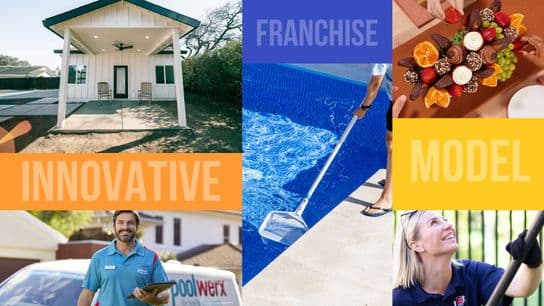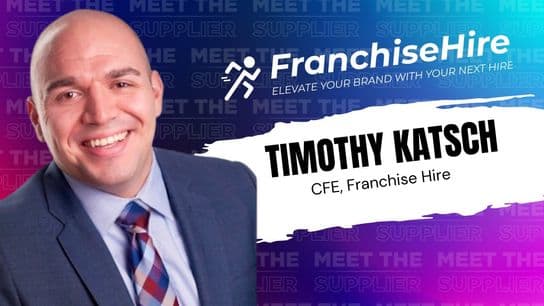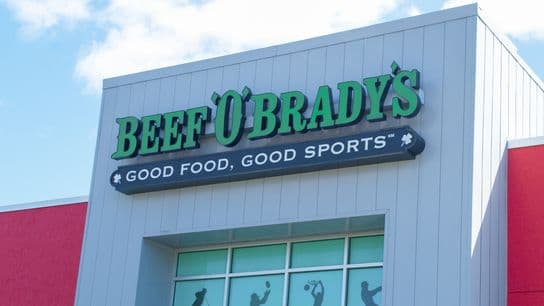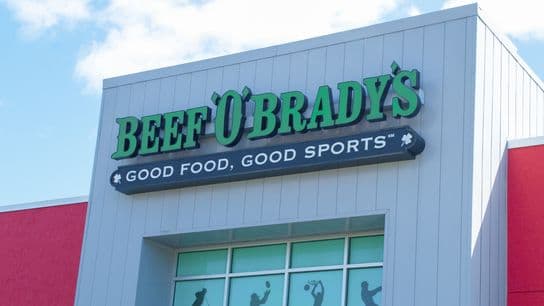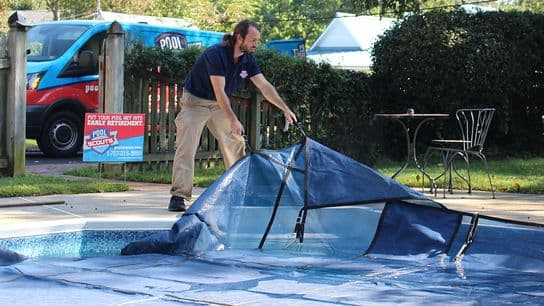IFA 2017: Perfect Storm of Positive Growth Elements Creates Both Opportunities and Barriers for Franchise Development
2017 is off to a roaring start and for the first time in over a decade, the future of franchising is bright.
The election is over, the SBA lending gates are open, Americans are gradually becoming more educated about franchising and Millennials are entering the franchise ownership ranks in record numbers. To put that in perspective, more than one new franchise system started up every day for past two years, leading to the largest attendance of any International Franchise Association conference in the organization’s history. This year’s convention in Las Vegas brought a crowd of over 4,000 to the three-day event.
2017 is the year of the emerging franchise brand. Emerging brands made up an estimated 90% of the attendees at this year’s conference. The most common definition of an emerging growth franchise brand is one that has less than five years’ experience and less than 25 locations open.
According to FranData, there are now over 3,800 franchise brands in operation and our industry will grow well past 4,000 in 2017. Of those, less than 680 have over 100 units. Less than 90 of that group have been in franchising for less than 10 years and many of the larger brands took decades to reach 500 or more units.
The message is clear: the market for franchising is growing and so are the options a franchise buyer has. Each potential franchise owner can pick from a much larger number of franchise systems, making franchise recruitment much more competitive. Despite a number of positive trends that favor franchising, the average emerging brand or mature brand that is re-emerging is facing a number of challenges to jumpstart growth momentum.
Here are our key takeaways from this year’s conference:
The Story Always Stands Out: At almost every session we attended this year, talk focused on how critical storytelling has become. From discussion of website design, to sales process to targeted videos and Facebook advertising, the story is the key element that makes an impact.
Franchise buyers – and we estimate there are at least 12 million potential buyers in the country at any time – gravitate towards the brands with the stories they can best relate to. That’s the power of a well-told story: you don’t realize you are being sold to because the content is interesting, helpful and relates to your own interests.
Storytelling dominates recruitment website design, dramatically changing the way smart franchise development teams are using video and text, which then translates to every level of the sales process. As humans, we use stories to make sense of the world around us, relate to one another and make decisions.
Take a critical look at your website, the video you use and all of your written materials. Are they full of bullet points, catchy marketing slogans and skimpy of detail? Chances are you’re alienating a large number of potential franchise buyers by bombarding them with messaging that screams that you are a desperate salesperson who is lurking behind your form, ready to pounce on an unsuspecting buyer.
Strive to unpack your brand through the use of storytelling techniques that answer common questions about your franchise opportunity, while also revealing the integrity behind your company and the authenticity of your actual owners. If people can relate to you through a well-told story, you’ll garner a larger share of the potential market. If you don’t someone else will.
Persona Marketing Takes Center Stage: We were pleased to see some sophisticated brands beginning to adopt persona marketing, as we believe this is the most important – and most impactful – franchise development trend for 2017.
Persona marketing is simply identifying the type of buyer you are targeting and building a profile that is as specific to this type of buyer as possible. A typical franchise system will have 6-8 of these profiles. For instance, Marco’s Pizza targets immigrant buyers who are often 2nd generation Americans and whose parents might have owned hotels or Subway franchises. They also target veterans and existing food service managers who want to move up to ownership.
For each of these specific groups, develop a marketing strategy that consists of documentary videos, blog-style articles, email-targeted PPC and Facebook ads, email campaigns, segmented retargeting campaigns, lookalike campaigns and dead lead emails. The messaging and value proposition for each group of buyer types are different – and likewise you will need to position your brand messaging in terms that make sense to each individual buyer type in ways that are relatable and emotional. If a candidate wants to own a family business they can turn into a legacy for their kids, they need to be able to envision this dream as a reality, and they best way to do this is to see or read about others who have done so in the past.
This type of marketing switch can impact your recruitment website and overall marketing strategy, making it much more complex but also higher performance.
Website Opt-In is Rapidly Changing: Traditionally, buyers have filled out a website form with a number of required fields to opt in, but now buyers have many more ways to opt in.
Forms today are much shorter than in the past, with the preferred form just having fields for name, email, phone and area. Every additional field you add to the form reduces the number of leads you gather. In the “Lead Generation Tactics That Work” roundtable, Peter Lindsay from Sport Clips* mentioned how shocked they were that leads spiked when they took off the ‘how did you hear about us’ field. Not only is most of the info not accurate, the extra field just kept people from filling the form out. Our suggestion: take it off yours if you have it!
Paul Pickett from Wild Birds Unlimited* explained that he now makes the phone number nonrequired on his forms and that he has seen an uptick in both the quality of information and the quality of leads as a result. Try experimenting with making some or all your fields non-required. Buyers expect you to pounce on them when they fill out a form and serious buyers don’t want to lose control of the conversation.
Which leads us to phone leads – it is shocking that most systems don’t have trackable phone numbers on their recruitment websites. Phone leads now make up an estimated 25% of all leads and phone leads close at twice the rate of web form leads. Mobile device users often prefer to call – it just takes a single click on your number – and serious buyers with high investment ability don’t want to give a salesperson any information they don’t need to.
Lastly, text-opt in is popping up as a viable way to engage buyers. Using a commercial text service like the one we are fond of – textrequest.com – and putting a ‘Text us a Question’ button on the website, primarily for mobile visitors in an effective way to engage with potential buyers. Raj Bhatt, Co-CEO of Woops! Macarons, mentioned they sold a franchise to a prospect who used the text service to ask about how Woops! compared to a competitor.
Rethink your opt-in strategy. It is clear that the conventional wisdom that ‘real buyers will fill out the form’ simply isn’t true. They just don’t opt in unless you make it easier for them.
Crisis of Trust for Franchise Sales: With tensions in the country high, we live in an age of distrust. Skepticism is at an all-time high, and the distrust of institutions certainly trickles down to a wariness of being sold to. Monday’s Marketing and Technology Summit speaker Daniel Levine termed this a “Crisis of Trust.” Consumers (and particularly potential franchisees) don’t want to be sold to; they want to believe in something. This is especially true of the millennial buyers that are flooding the franchisee market today. They’ve grown up being blasted by media and commercial pitches, which has created a deep rooted distrust and unique ability to know when they are being sold to. This makes the job of franchise recruiters particularly difficult.
How do you combat this “Crisis of Trust” we find ourselves in? By being real and transparent. Gone are the days of the sales pitch and marketing material filled with corporate jargon – now recruiters, and the brand they represent, have to be authentic to the point in which skepticism can be easily defeated. This is why sites like Yelp! have become dominant – we don’t trust companies, we only trust each other. The organizations that are honest and upfront about who they are and the mission that they strive for will shine.
Your franchise recruitment website has to be transparent. From documentary videos about the actual lives of your franchisees – not forced testimonials – to pieces on the culture and atmosphere that exists at your company, to crowd sourced footage from your franchisees and employees across the system, all marketing material must be authentic. Striving for a greater purpose, beyond the dollars and cents, shows a care for the larger world and can fight the distrust in your potential franchisees minds. We have to go into conversations now knowing that this skepticism exists, and we have to actively battle it.
Video For Franchise Development is Essential: The use of video in your franchise recruitment process took on an unprecedented level of attention at this year’s IFA. Finally, the sessions are no longer trying to convince people to use video, the discussion has become what kind of video to produce and how best to use it. With new statistics out on how video will soon be 75% of internet traffic, those franchise recruitment sites that still don’t have video are now irrelevant. So it was refreshing to see the focus turn to how to MAKE and DISTRIBUTE the right kind of video.
Video is likely the key tool to fighting the mistrust mentioned earlier. No other form of marketing can represent the feel, emotions and culture of your organization quite like video can. Franchisee documentaries, which segment out the types of franchisees you’re recruiting – whether it’s the big, multi-unit franchisee, the father or mother looking to build a multi-generational business for their children, or the burnt-out Corporate America conversion – they speak different languages and we need to communicate differently to each of these. In all likelihood, your franchise system has successful, engaging franchisees that would shine on camera and be immensely relatable through a well-produced documentary. These are the kinds of emotional connections that glow with authenticity. Get away from mere testimonials, and start diving deeper. Engage with your franchisee base to crowdsource video from them, creating montages of their lives, and providing genuine glimpses at what it’s like to be a franchisee in your system.
So while we know we have to set aside a portion of our budget to produce video and fight skepticism, how do we make sure these videos are being seen by our prospects? There was exciting conversation at IFA about the success people are having in getting their video distributed and seen. While YouTube remains the number-two search engine in the world for a reason, rates for the duration-watched on well-produced videos are skyrocketing. We’re seeing a flip from the mini videos of Vine (now dead) and Instagram (now allowing much longer video) and the numbers are showing people will gladly watch extensive amounts of video if they enjoy the subject and relate to its message. This will especially ring true for your potential franchisees – a highly captivated audience because of the size of the buy they’re considering.
Facebook is taking advantage of the rise in duration of videos, now giving greater preference in their algorithms to longer videos that are being watched. This means that for successful distribution of your videos, you need to be devoting resources to both YouTube and Facebook. More and more franchisors are finding leads through Facebook this year, and housing your videos and optimizing them correctly on Facebook is key to keeping your brand top-of-mind. Facebook is also starting to rival YouTube for the analytics they provide on how people are watching your videos, a trend that can only benefit marketers and recruiters. So make sure you’re not just producing video for the sake of having video – this is a total waste of resources. Be intentional about how you want to portray your franchisees and your company’s culture, and how that might convey on video. Along the way, be mindful of how this video will be used, where it will be distributed, and then pay close attention to the numbers you get back from YouTube and Facebook on how those potential franchisees are consuming your new video.
Google Changes to SEO: Google continues to roll out changes to search engine rankings that affect your website. The top 3 for this year:
1. Mobile-first indexing. Google is now indexing the mobile version of your website and using its sitemap over the desktop version. With mobile visitors making up almost 60% of searches on recruitment websites, this is important. Newer sites with cleaner, more mobile friendly architecture and fast loading pages that still offer up the full scope of content will increase in rankings and poor mobile performers will continue to drop.
2. Voice-driven search is increasing. Google reported that 1 in 10 searchers are now using voice-driven search to interface with search engines. This is important because the language we use when we speak is subtly different than the language we use when we type in search queries. You might need to expand your keywords and content to map out additional terms so you cover both types of searches.
3. Page length still important – Google suggests a minimum of 1500 words on a single page to gain ranking. A good bit of current web design trends are going to more visual, ‘bootstrap’ design, which fewer words and more photos. These new sites look nice but perform poorly on rankings. Longer, article-format pages still influence buyers and rank higher. Resist the style-over-substance design movement and give your prospects longer pages. You’ll be rewarded!
More Diverse Buyers: diversity is playing a huge roll in franchise development this year. Up to 55% of franchise buyers this year could be from ethic or racially diverse groups and we’re seeing a newer class of highly capitalized and highly skilled buyers entering franchising.
Does your marketing reflect an inclusive and diverse culture or when a prospect looks at your recruitment website do they see white guys as owners and brown people in employee positions? This can be a real turnoff to these buyers. Speak with them, ask their advice and invite as many into your process as you can; they are the future of franchising.
Facebook Advertising Evolves: One of the newest trends for lead generation is coming from Facebook’s new and constantly evolving ad platform. Google and Facebook have entered a cold war for advertising platforms and Facebook is beginning give Google a cost-effective run for its money.
Many savvy marketers are getting good results from targeted Facebook ads, promoted posts and lead form ads. If you’ve tried Facebook and not gotten good results, try again. That’s turning out to be a very successful lead generation source for 2017.
Click here to read the full article on Brand Journalist's homepage.
*This brand is a paid partner of 1851 Franchise. For more information on paid partnerships please click here.







